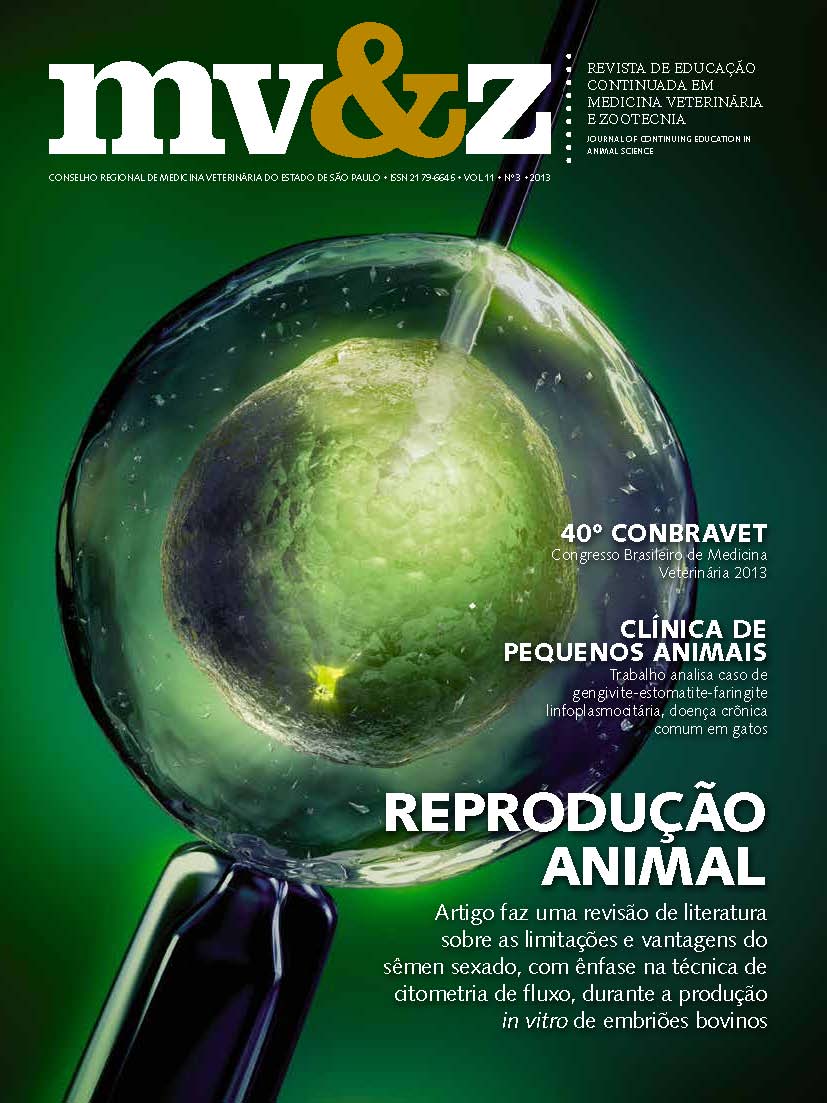Diversity of bats species sent for rabies diagnosis to Pasteur Institute over the period from 2009 to 2012
Conteúdo do artigo principal
Resumo
They are an important rabies reservoirs and all species can be infected or be the transmitter of rabies virus, independently of their specie classification or feeding habits. This work aimed a survey of bats species originated from counties of Sao Paulo state, which were sent to the diagnostic laboratory of the Pasteur Institute – Sao Paulo. Between August 2009 to October 2012; 9.109 bats specimens were received and submitted to recommended techniques for rabies diagnosis by World Health Organization. From these specimens, 8.421 (92,45%) were classified in family, genus and specie, by morphological and morphometric parameters using bats identification keys. Furthermore, they also were characterized by feeding habits. The classified bats belonged to 4 families, 27 genus and 52 species. From the total of classified bats, 102 (1,21%) were diagnosed positive for rabies, belonged to 14 different species. According to the feeding habit, the insectivorous bats were the most numerous, totalizing 68 specimens among the positives, predictable fact due to the bigger demographic population of theses bats in our environment, which the most prevalent species were Myotis nigricans, Nyctinomops laticaudatus and Eptesicus furinalis. Among the frugivorous, 28 positive specimens were detected as positive for rabies, which 100% belonged to Artibeus genus. The hematophagous bats (4) were identified as Desmodus rotundus. Nevertheless, it was not possible to identify the specie and the feeding habit of 2 specimens. These results observed in this study emphasize the importance of these species in the circulation of rabies virus in the state of Sao Paulo. Thus, a deeper knowledge of the chiropterofauna could contribute to improve
Detalhes do artigo
Seção
1. Autores mantém os direitos autorais e concedem à revista o direito de primeira publicação, com o trabalho licenciado sob a Creative Commons Atribuição-NãoComercial-SemDerivações 4.0 Internacional
2. Autores têm autorização para assumir contratos adicionais separadamente, para distribuição não-exclusica da versão do trabalho publicada nesta revista (ex.: publicar em repositório institucional ou como capítulo de livro), com reconhecimento de autoria e publicação inicial nesta revista.
3. Autores têm permissão e são estimulados a publicar e distribuir seu trabalho online (ex.: em repositórios instituicionais ou na sua página pessoal) a qualquer ponto antes ou durante o processo editorial, já que isso pode gerar alterações produtivas, bem como aumentar o impacto e a citação do trabalho publicado (Veja O Efeito do Acesso Livre);
